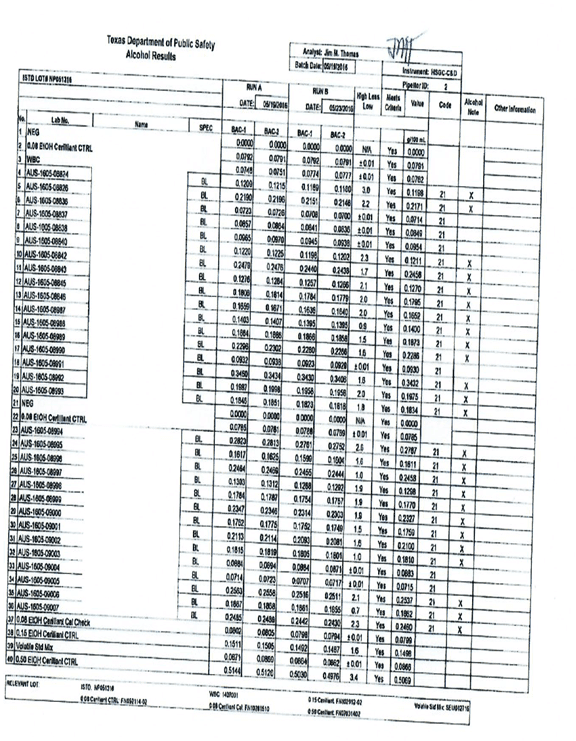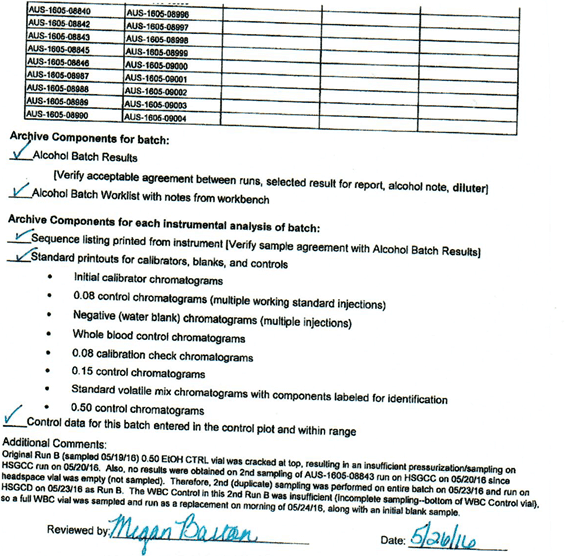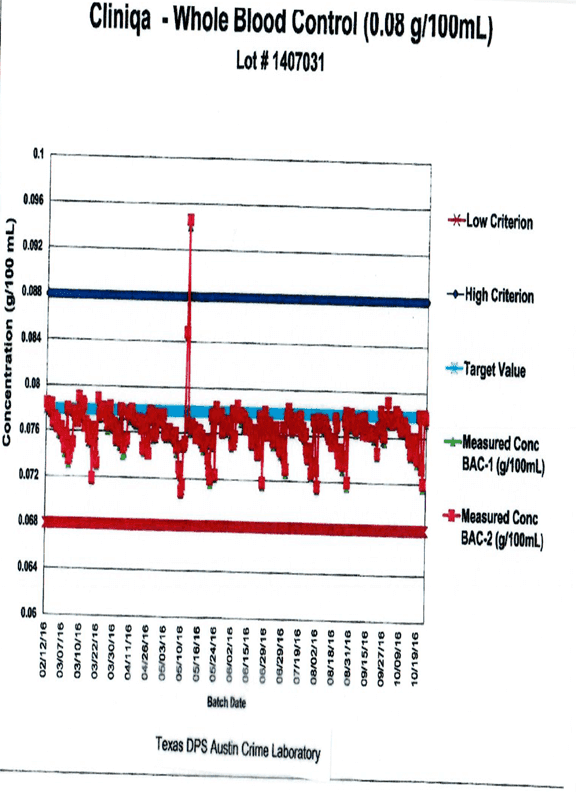A Blood Test Isn’t Airtight Evidence in Your DWI Case
Blood testing in DWI cases may be a bit frightening, especially to someone who has been arrested. Of course, there is the medical procedure of drawing blood that makes many people squeamish. Then, there is a lot of pomp and circumstance around the process. Latex gloves, test tubes, and an official-looking medical professional who does this all day. You have every reason to think, “they went to med school, so whatever they say must be right.” But that person isn’t the only one involved in your blood test.
Things May Be Different than They Appear
The Texas Department of Public Safety’s (DPS) Forensic Toxicology Laboratory is the central blood test lab in the state. Their gas chromatographs are touted as the newest and best in DWI blood testing, and they provide more reliable results than even a police report. You can argue that your arresting officer didn’t do a good job of testing your sobriety, but blood reports are all about science.
When the inevitable results come in, most people believe, “well, if it’s .08 or higher I’m in trouble.” Then, you look at what the tests show:
At this point, you might think, “.24? I’m done!”
It looks official and organized, showing a number of other people in the same position as you. So, what is there to do?
When the Numbers Lie
You must understand that the State of Texas has the burden to prove, beyond a reasonable doubt, that the blood test used to prosecute a DWI is scientifically reliable. Your lawyer should fight back by analyzing the laboratory reports and looking for inaccuracies or procedural errors. In this particular case, the judge agreed with me that the reports were not reliable. My .24 client’s DWI was dismissed. Why?
There were a few reasons, but the main reason was that the testing process, although it looked great on paper, was never completed. Take a look at the notes:
What the supervisor is saying about the analyst’s work is very interesting. It goes like this:
Run B was sampled Thursday (5/19/16) and run Friday (5/20/16).
Okay, the .50 control vial was cracked during sealing and all the gasses escaped before testing. A control is essential in the testing process to make certain the machine is returning the correct values. In this case, we have no proof, and the notification of this error was buried at the end of a file of about 150 documents.
One defendant’s vial in this test group did not get a result because it was empty when the analyst put it in the machine for measurement. He failed to pipette blood into the testing vial. The vial is clear glass, and the analyst didn’t notice that the very red blood was not in it when he put it in the machine. This guy needs a vacation!
So, he re-samples and runs the whole batch again on Monday (5/23/16).
The .08 whole blood control on Monday (5/23/16) was sampled using only ½ the appropriate amount and tested at .04 rather than .08. Therefore, the .08 control was not working during the batch of tests. That’s a problem for every piece of data collected from this test, especially since it was the only blood control.
A full .08 control was sampled and added as a replacement on the day after the run, Tuesday (5/24/16).
In that frightening chart with your .24 blood test result, in the slot for the .08 control, the result from Tuesday (5/24/16) was substituted for the number that the Monday (5/23/16) .04 control should have measured, in order to make it appear that the proper amount was tested in the Monday batch. Of course, now we know this data comes from Tuesday after the batch test was run. The documents showing the erroneous .04 result were placed at the end of the long file.
Convenient, right? But that’s not all. The supervisor also said:
Every red square represents the use, and performance, of that .08 control in the batches tested during 2016. For that Monday (5/23/16) and Tuesday (5/24/16), do you see any red square showing .04? Nope. Apparently, it was not plotted and within control because a .04 would be here if it existed. I guess it never happened, right?
No Reliable Data Means No Conviction
Fortunately for my client, we found the numbers for that control, and the judge ruled appropriately and threw out the unreliable test result. Going back to our idea of human error and evidence reliability, while these machines may run the same every time, the operators can really mess up results. That’s why the Supreme Court actually published decisions that articulated some rules for the blood test process.
Remember, the burden of proof is on the State of Texas when you’re arrested for a DWI. Just because something comes from a fancy laboratory doesn’t mean it’s 100% truthful. I analyze test results like these for my clients all the time, and I know firsthand that a lot of the numbers on the page don’t reflect reality. With this case, the chart looked really good (and scary) at first, but things are not always as they appear.
I can look at the facts behind the “facts” in your case too. Contact my firm today online or by dialing F:P:Sub:Phone}.




